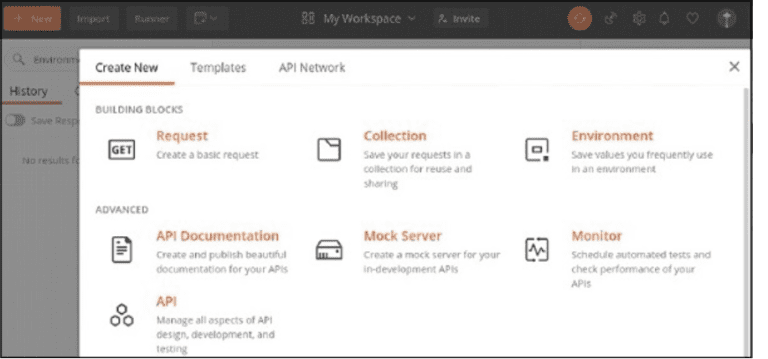Introduction:
API testing is an important aspect of guaranteeing API functioning and stability. Postman is a popular tool that simplifies and improves the API testing process. In this blog article, we will look at Postman’s features and give a full introduction to performing API testing with this powerful tool.

Knowing about Postman:
With a straightforward user interface for creating, sending, and managing API calls, Postman is a tool for developing and testing APIs. It is suitable for testing a variety of APIs since it supports a number of protocols, including REST, SOAP, and GraphQL.
Key Features of Postman for API Testing:
- Request Setting up: Postman’s easy to use graphical user interface let you create and alter API requests. Request bodies, query parameters, headers, and methods of authentication are all easily defined.
- Collection and Environment Management: Postman organizes API requests into collections, enabling easy management and reusability. You can group related requests, define variables, and set up different environments for testing purposes.
- Tests and assertions: Postman offers a thorough testing framework that enables you to create and run tests on API answers. Assertions can be created to check the accuracy of headers, response body text, and status codes, among other things.
- Automated Workflows: Postman supports the creation of workflows by chaining multiple requests together. This enables the automation of complex testing scenarios and the validation of API interactions in sequence
- Testing with data: Postman lets you add and remove data in various formats, like CSV or JSON. With the help of this function, you are able to carry out data-driven testing, during which you frequently analyse different data sets to verify your API’s functionality.
- Mock Servers: Postman’s mock server feature enables you to simulate API responses without the need for a real backend implementation. This is useful for testing client-side integrations or when working with third-party APIs that may have usage limitations.
Best Practices for API Testing with Postman:
- Organize Requests: Use collections to group related API requests based on functional areas or modules. This helps maintain a structured and organized testing workflow.
- Utilise Environments: Create several environments in Postman (such as development, staging, and production) to enable testing across various settings without manually changing request data.
- Write Meaningful and Detailed Tests: Produce thorough tests to verify the functionality of your API. Verify response status codes, response content, and other pertinent elements using assertions.
- Request parameterization: You can parameterize both API requests and responses by using variables. As a result, requests with various inputs can be easily modified and reused.
- Leverage Pre-Request and Post-Request Scripts: Use pre-request scripts to set up test data or environment conditions before making the API request. Similarly, leverage post-request scripts to perform cleanup or additional actions after receiving the API response.
- Collaborate and Share: Postman allows for the collaboration and sharing of collections, environments, and test results. Use this feature to improve teamwork, gather feedback, and streamline the testing process.
Integrations and Extensibility:
Postman provides a wide selection of connectors and extensions to help you improve your API testing skills. It interfaces with version control systems, issue tracking tools, and major testing frameworks, allowing for smooth collaboration and integration into your development workflow.
Conclusion:
Postman is a robust and user-friendly API testing tool that allows developers and testers to easily test, validate, and document APIs. You can expedite your API testing process, verify the dependability of your APIs, and confidently provide high-quality apps by using its capabilities, best practises, and connectors.
Reference:
https://learning.postman.com/docs/designing-and-developing-your-api/testing-an-api/ https://www.softwaretestinghelp.com/api-testing-using-postman/ For further clarifications or support, please write to contact@paradigmitcyber.com

